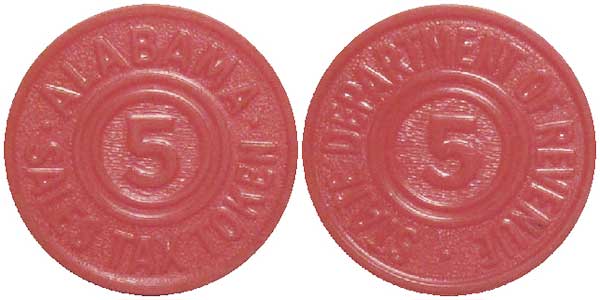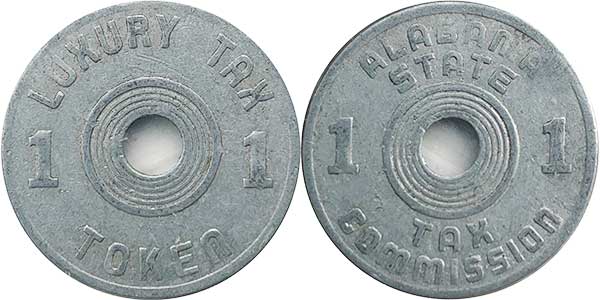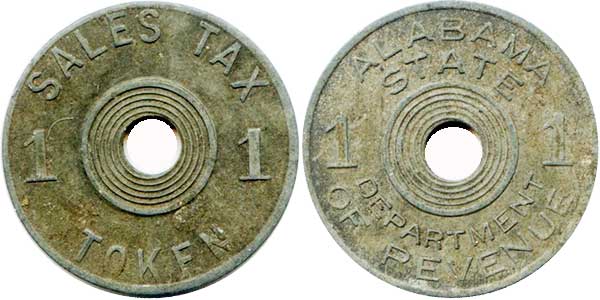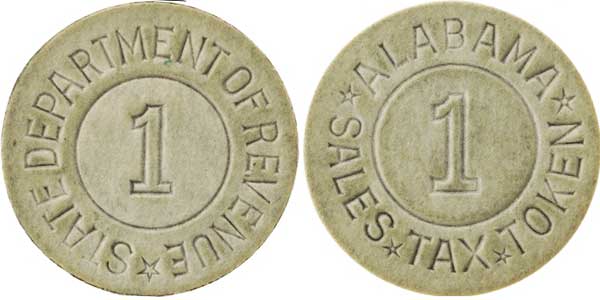Tax tokens of Alabama USA
Alabama, like other states during the Great Depression, issued sales tokens to collect sales tax on small purchases. These tokens were valued in fractions of a cent (usually a "mill," which is 1/10 of a cent). They were used to pay fractional sales tax on small items whose value was too small to use a standard coin.

5 mill (1/2 cent)
16 mm., brass
1941-1942
5 / 5 / LUXURY TAX / TOKEN / Star in the center
5 / 5 / ALABAMA STATE / TAX COMMISSION / Star in the center

5 mill (1/2 cent)
23 mm., red plastic
1942-1945
5 / ALABAMA / SALES TAX TOKEN / Two concentric circles around the digit
5 / STATE DEPARTMENT OF REVENUEN / Two concentric circles around the
digit

1 mill (1/10 cent)
23.5 mm., aluminium
1937-1938
1 / 1 / LUXURY TAX / TOKEN /
Concentric circles around the hole
1 / 1 / ALABAMA STATE / TAX COMMISSION /
Concentric circles around the hole

1 mill (1/10 cent)
23 mm., aluminium
1939-1941
1 / 1 / SALES TAX / TOKEN /
Concentric circles around the hole
1 / 1 / ALABAMA STATE / DEPARTMENT OF REVENUE /
Concentric circles around the hole

1 mill (1/10 cent)
23 mm., fiber
1945-1946
1 / ALABAMA / SALES TAX TOKEN / Circle around the digit
1 / DEPARTMENT OF REVENUE / Circle around the digit
Alabama tax tokens value
Alabama issued tax tokens made of hard fiber, red plastic, aluminum,
brass, and zinc. All are common and worth less than a dollar.
The zinc token is harder to find in good condition because zinc does not hold up
well. A good zinc tax token can be worth several dollars.
There are many varieties of fiber tags, but their value is usually not much
affected. Red, dark blue, and blue can be slightly more expensive. The rarest is
a very pale blue fiber token, which can fetch several dollars more than the
others.
